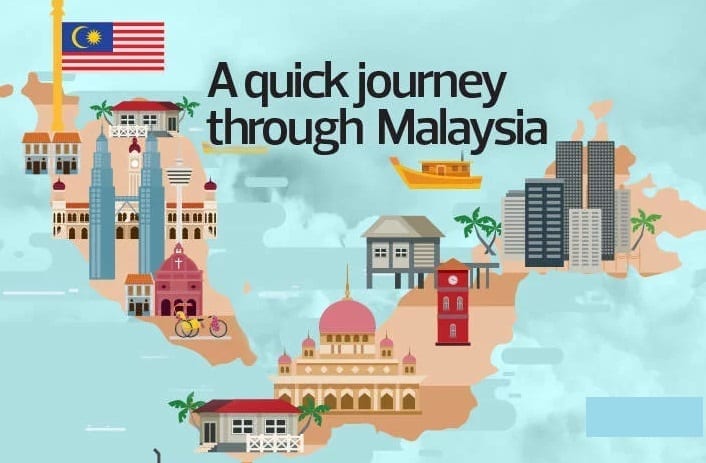Travel, Visit Malaysia 大马观光
A quick journey through Malaysia
Malaysia celebrated 62 years of independence last month but let us not forget Malaysia Day, which falls on Sept 16. On this day in 1963, the Federation of Malaya, Sarawak, North Borneo (now Sabah) and Singapore (which left two years later) came together to establish Malaysia.
This country has one of the most unique monarchy systems in the world in which the king is elected on a rotational basis. The nine members of the Conference of Rulers elect the Yang di-Pertuan Agong who will serve for five years. The nine are the hereditary Malay rulers from the states of Johor, Kedah, Kelantan, Pahang, Negeri Sembilan, Perlis, Perak, Selangor and Terengganu.
The membership of the Conference of Rulers includes the four Yang Dipertuas Negeri or governors of Sarawak, Sabah, Melaka and Penang but only the royal rulers are allowed to vote or stand for election as the Yang di-Pertuan Agong.
Working collaboratively with the branches of the Real Estate and Housing Developers’ Association (Rehda), the Sarawak Housing and Real Estate Developers’ Association (Sheda) and the Sabah Housing and Real Estate Developers’ Association (Shareda), City & Country talks about some of the interesting features, both historical and present-day, of the various states and federal territories in this year’s Malaysia Day feature.
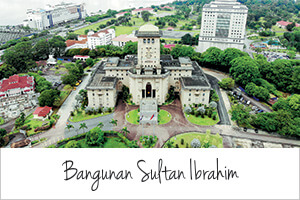
Johor Darul Ta’zim
Johor is home to the Southern Economic Growth Corridor. Johor Baru is the state capital.
The official portal for the Coronation of HRH Sultan Ibrahim of Johor notes that the modern Johor Sultanate, under the Temenggong Dynasty, goes back to 1855. Temenggong Daeng Ibrahim established Iskandar Puteri as the administrative centre and built police stations, courthouses and other government departments.
His son, Sultan Abu Bakar, ascended the throne in 1862. He renamed Iskandar Puteri Johor Bahru in 1866 and redesigned the Johor state flag and royal standard in 1871.
Later, he also promulgated the Johor state constitution, making it the first Malay state to have a formal and written set of laws.
According to Rehda Johor, Bangunan Sultan Ibrahim is one of the most majestic buildings in Johor Baru. A combination of Malay and colonial architecture, it was built between 1936 and 1939.
It was the earliest skyscraper and the tallest building in Johor Baru until the 1970s. With a built-up of 60,000 sq ft, Bangunan Sultan Ibrahim was estimated to cost a whopping RM2 million to build at the time.
During World War II when the state came under Japanese rule, the Japanese Army used the building as a fortress. After the Japanese left, the building served as the State Secretariat building, State Assembly Hall and Menteri Besar’s office until 2009.
Istana Besar Johor, or the Grand Palace, is a prominent historical landmark in Johor Baru. Constructed in 1864 overlooking the Straits of Johor, the building’s main architectural feature is its Anglo-Malay architecture, characterised by its Malay-style dome in contrast with its Anglo-influenced blue roof.
It is now used only for investitures, state banquets and royal functions. One of the oldest buildings in the city, it contains valuable artifacts and souvenirs from the glorious past of the Johor Sultanate.
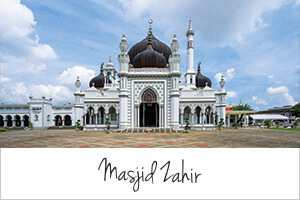
Kedah Darul Aman
The state’s capital Alor Setar is the birthplace of the country’s first prime minister, Tunku Abdul Rahman Putra Al-Haj, and the fourth and current prime minister, Tun Dr Mahathir Mohamad.
According to Rehda Kedah, Alor Setar was founded by the 19th Sultan of Kedah, Sultan Muhammad Jiwa Zainal Adilin II, in December 1735. The name “Alor Setar” is derived from two Malay words: alor (which means a small stream) and setar (the name of a tree).
Pekan Cina, Alor Setar’s earliest town centre, was named as a mark of honour to the first Chinese kapitan of Alor Setar, Lee Yuk Cheng, in recognition of his contributions to society.
Also known by his Malay name of Tok Ekong or Eh-Toh, Lee was appointed the kapitan by the 24th Sultan of Kedah, Sultan Ahmad Tajuddin Mukarram Shah, in 1863. Fluent in both spoken and written Malay and Jawi, Lee was also well-versed in Malay culture and customs.
The uniqueness of Pekan Cina is that it is located next to Pekan Melayu, making the area a symbol of racial harmony.
Pekan Cina is also near two landmarks of the state — Masjid Zahir and Tanjung Chali. The state mosque is one of the oldest in the country, having been built in 1912.
Tanjung Chali, meanwhile, is the point where Sungai Kedah and Sungai Anak Bukit meet. An important port for the Chinese, Malay and Arab traders of the early 18th century, Tanjung Chali is today fast becoming a vibrant tourist hub with many heritage buildings turned into cafés, pubs and restaurants.
Recently, the state government named the areas surrounding Masjid Zahir, including Medan Banda Square, Pekan Cina and Pekan Melayu, as the Alor Setar Heritage Trail with the aim of promoting it as a tourist belt.
Caffè Diem, a coffee place in a prewar shophouse in Pekan Cina, has been named the World Silver Winner in the Heritage Category for 2019 by the Fiabci World Prix d’Excellence Awards. It is the first such award for Alor Setar and Kedah.
The duty-free Langkawi, which comprises 99 islands, is Kedah’s jewel in the crown. Located 30km off the mainland coast of northwestern Malaysia, it is an island of legends and folklore.
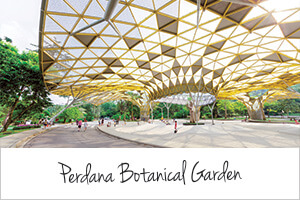
Kuala Lumpur
Kuala Lumpur has many iconic landmarks but what is different today is the growth of urban communal spaces that reflect the lifestyle needs of the present and future generations. Those who live in the city aspire towards higher consumption patterns and a better quality of life.
According to Rehda Wilayah Persekutuan (KL), multicultural experiences — from sightseeing, dining and shopping to entertainment — has driven the city to focus on urban parks and spaces as distinct offerings with signature events. Meanwhile, the city authorities are also rehabilitating green spaces and natural habitats and building eco-adventure clusters and offerings.
One example is Perdana Botanical Garden, formerly known as Perdana Lake Gardens. One of the city’s largest recreational parks covering an area of 92.2ha, it is situated in the Tun Abdul Razak Heritage Park in the heart of Kuala Lumpur. The rebranded park is a peaceful and green respite hidden away from the noise and concrete of the city.
Lush and buzzing with life, the public space is a popular venue for locals and foreigners, young and old.
Its attractions include lush gardens, a lake and a Stonehenge replica. Visitors can have a picnic, jog, skate or take a stroll on the grounds, and special events and performances are held at Laman Perdana.
The park is near other landmarks such as Tugu Negara, National Museum, Kuala Lumpur Bird and Butterfly Park and the Asean Sculpture Garden, where one can view public art installations by artists from Singapore, Malaysia, the Philippines, Thailand, Indonesia and Brunei.
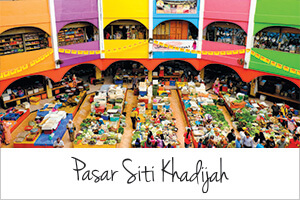
Kelantan Darul Naim
Located on the northeastern side of Peninsular Malaysia, Kelantan is an agricultural state with padi fields, rustic fishing villages and casuarina-lined beaches. Due to its relatively isolated location and largely rural lifestyle, Kelantan’s culture differs somewhat from Malay culture in the other parts of the peninsula. The difference is reflected in the cuisine, arts and unique Kelantanese Malay language.
The state’s capital is Kota Baru whose landmarks, Rehda Kelantan says, include Pintu Gerbang Kota Sultan Ismail Petra or Menara Rehal. Many of the state’s monuments and historical buildings, such as Masjid Al-Muhammadi, the War Museum, Istana Jahar and Istana Batu, are also located nearby.
Another of Kota Baru’s landmarks is Pasar Siti Khadijah, which was formerly known as Pasar Besar Buluh Kubu. The market was renamed by the late chief minister Datuk Nik Abdul Aziz Nik Mat as a token of respect to the women traders who dominate the octagon-shaped market.
Masjid Kampung Laut is said to have been built by missionaries who travelled through the Malay archipelago spreading Islam. The foundations of the mosque were laid in the 1730s, making it the oldest in Malaysia and Southeast Asia.
The mosque is named after Kampung Laut, a village on the banks of Kelantan River in Tumpat district, where it was originally located. At the end of the 19th century, the mosque became an important religious centre and was expanded to include additional prayer space and rooms, porches and towers. These add-ons used the unique Tebuk-Pasak technique, where no nails are used in the building of the structures.
The foundations of the mosque became weak as it was built on the banks of the river and was constantly hit by flash floods. After a flood in 1966, which destroyed part of the mosque, the Malaysian Historical Society suggested that it be moved to another location. In 1968, the mosque was resurrected at Universiti Malaya’s Academy of Islamic Studies at Nilam Puri, Kota Baru, where it remains until today.
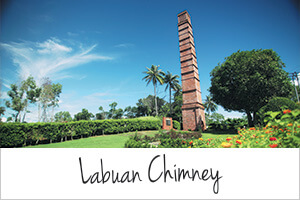
Labuan
The history of Labuan dates back to the 15th century when it was part of Brunei. In 1846, James Brooke, who had become the first Rajah of Sarawak four years earlier, acquired the territory through the Treaty of Labuan for Britain and it became a free trade port. In 1984, Labuan was declared a federal territory and made an international offshore financial centre in 1990.
Even though it is a quiet town, Labuan has its share of attractions and landmarks. One is the Labuan War Cemetery in Jalan Tanjung Batu not far from Labuan Airport, which is the final resting place of 3,908 soldiers who died fighting for Borneo in World War II. Only 1,752 of the remains have been identified — 858 Australians, 814 British, 43 Indians, 36 Malayans, a New Zealander and members of the local forces of North Borneo, Brunei and Sarawak. A visit to the well-maintained landscaped grounds — lined with headstones and surrounded by trees — is a calming and peaceful experience.
Over at Tanjung Kubong is the famous Labuan Chimney. The 32m structure was built in the 1800s from 23,000 raw red bricks, said to be imported from the UK. Its purpose remains a mystery, with nothing to suggest that it was used as a chimney. However, it has become a historical landmark. Nearby is the Chimney Museum where you can learn about the history of coal mining in Labuan from 1847 to 1911, as well as the history of Tanjung Kubong.
There is also the Labuan state mosque, known as the Masjid Jamek An-Nur, which opened its doors in 1988. A blend of Turkish and Bruneian architecture, the mosque is known for its unique design, with a dome flanked by two tall minarets.
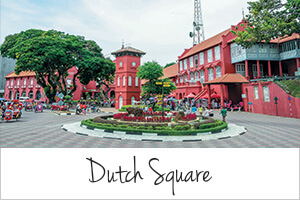
Melaka
Melaka is renowned as a tourist hub with a rich history. Its history goes back to the late 14th century, when a Sumatran prince, Parameswara, fleeing from the invading Majapahit army, landed in Temasek before ending up in Melaka.
He named the place after the tree he was resting under.
Located at the narrowest point of the Straits of Malacca, the state grew into a trading ground for traders from all over Asia. One of the most significant events in its history was the establishment of the Peranakan culture following an influx of migrants from China.
The Peranakan are people of Chinese descent who adopted local customs. They retained most of their ethnic and religious traditions, but adopted the language and culture of the Malays.
According to the official portal of Melaka state government, the Portuguese arrived and conquered the state in 1511. The Dutch took over Melaka in 1641, before the state was ceded to the British in the late 17th century.
Today, many buildings in Melaka reflect its colonial past. These include A Famosa, St Paul’s Church and Dutch Square. A Famosa Fort is the ruins of a Portuguese fortress. Dutch Square, which is also known as Red Square as it is surrounded by red-coloured buildings, is associated with colonial rule under the Dutch and the British.
Melaka was designated a Unesco World Heritage Site in 2008. According to Rehda Melaka, the state attracted 17 million tourists last year. For the first three months this year, tourist arrivals hit 4.79 million.
Ayer Keroh and Bukit Katil are expected to draw buyers and investors with federal and state government offices located in the Melaka International Trade Centre. The High-Speed Rail project, if revived, with a proposed station at Ayer Keroh, will boost land and property values.
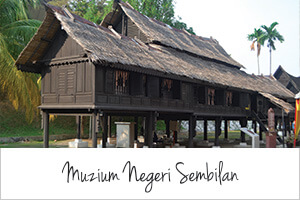
Negeri Sembilan Darul Khusus
Many of us would know that our one ringgit note features the image of Tuanku Abdul Rahman, the first Yang di-Pertuan Agong of Malaysia. But did you know that he was from Negeri Sembilan and was the eighth Yang di-Pertuan Besar of Negeri Sembilan?
Unlike most of the other states, Negeri Sembilan has distinctive traditions. It is generally known for its Adat Perpatih (Perpatih Laws or Matrilineal Custom), which is originated from Minangkabau.
The official portal of the Negeri Sembilan state government notes that the state was introduced to Adat Perpatih in the 12th century.
The most noticeable feature of Minangkabau architecture is the curved roof, which represents peace. One of the buildings with the feature is the Muzium Negeri Sembilan at the Crafts and Cultural Handicraft Complex on Jalan Sungai Ujong in Seremban.
The state museum comprises buildings called Teratak Perpatih, Istana Ampang Tinggi and Rumah Negeri Sembilan. Teratak Perpatih is the main building and displays the history of the state. It was previously used for the National Al-Quran Recitation Competition.
Istana Ampang Tinggi is a wooden castle made up of several finely carved panels and a pair of heavy sliding doors that cannot be found anywhere in Peninsular Malaysia today. The palace was built by the fifth Yang di-Pertuan Besar of Negeri Sembilan — Tengku Imam Raja Lenggang — on a ridge leading to a large padi field. It was left vacant from 1930 and fell into disrepair.
Meanwhile, Rumah Negeri Sembilan was originally owned by Datuk Kelana of Sungai Ujong. Built by Minangkabau craftsmen, the house has no nails or wooden pegs. The structure attracted much attention due to the unique craftsmanship and it was taken to England for an exhibition in 1994.
In 1953, Tuanku Abdul Rahman gave his permission for Istana Ampang Tinggi to be relocated to the Seremban Lake Garden on Dato’ Hamzah Road. It was subsequently transformed into the state museum. Then in 1980, the building was relocated to Jalan Sungai Ujong.
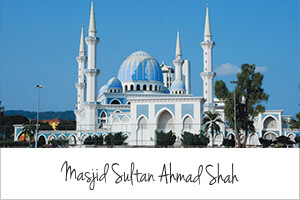
Pahang Darul Makmur
Malaysia’s current Yang di-Pertuan Agong, Al-Sultan Abdullah Ri’ayatuddin Al-Mustafa Billah Shah, hails from Pahang. Universiti Malaysia Pahang says that the state is the largest state in Peninsular Malaysia with an area of 35,960 sq km.
Rehda Pahang notes that state capital Kuantan has progressed steadily since its establishment in the early 1850s.
Kuantan has a mix of old and new buildings. Surrounding the city’s field are 1930-esque shophouses, colonial-style courthouses and Masjid Sultan Ahmad Shah. Separated by buildings of post-independence architecture where the state administrative government currently sits are the upscale East Coast Mall and Kuantan City Mall.
Kuantan’s landmarks are mainly of the natural variety. On the eastern coastline are the beaches of Teluk Cempedak Batu Hitam and Cherating, which hosts five-star resorts, a turtle sanctuary and its legendary Pulau Ular. It also has Pulau Tioman off its shore.
The inlands boast lush tropical rainforests that make up the Titiwangsa mountain range and the largest national forest reserve called Taman Negara. There are also popular attractions, such as the Sungai Pandan Waterfall and Rainbow Waterfall.
The nearby royal town of Pekan houses Masjid Sultan Abu Bakar, exhibiting artefacts and antiques that trace the lineage of the state’s royal family.
The East Coast Economic Region (ECER), an economic development region that covers Kelantan, Terengganu, Pahang and the district of Mersing, has played a major role in the development of Kuantan.
Significant projects under ECER in Kuantan include the expansion of Kuantan Port and the Malaysia-China Kuantan Industrial Park (MCKIP).
Kuantan Port having been upgraded to a deep-sea terminal and a free trade zone to attract more shipping flow.
Meanwhile, MCKIP is modelled after sister park, the China-Malaysia Qinzhou Industrial Park in China.
According to MCKIP’s official portal, the industrial park comprises MCKIP 1 (1,200 acres), MCKIP 2 (1,000 acres) and MCKIP 3 (1,300 acres). MCKIP 1 and 2 cater for heavy and medium industries while MCKIP 3 caters for a logistics hub, light industries, residential and commercial components.
An upcoming landmark in Kuantan — the 180m observation tower called Menara Teruntum — is scheduled to open in October. It is a project by the East Coast Economic Region Development Council.

Pulau Pinang
The official portal of the state government notes that Penang was formerly known as Pulau Ka Satu, a name said to be given by a sea rover called Ragam as it was the only large, isolated island he came across on his trading trips between Lingga and Kedah. It retained the name until the coming of the British in 1786. Rehda Penang explains that the name of the state is derived from “pinang”, or betel nut in Malay.
The state is made up of the island and Seberang Perai, a large strip of land on the mainland. The island is connected to the mainland by ferry and two bridges — the 13.5km Penang Bridge and the 24km Sultan Abdul Halim Mu’adzam Shah Bridge.
George Town, the capital and centre of administration, is one of the fastest growing areas in the country. It is a melting pot of various cultures, traditions, religions, customs and language, which are reflected in the daily lives of the different communities. The diversity extends to its cuisine, which has Malay, Chinese, Indian, Eurasian, Siamese and European influences. The city is renowned as a food paradise.
George Town lays claim to the largest collection of pre-war buildings in a Southeast Asia country and is a living historic settlement where mosques, temples, churches and clan houses have survived and provide a window into the past. Its well-preserved cultural and historical heritage was acknowledged by Unesco,which designated it a World Heritage Site on July 7, 2008.
The property market is supported by several planned and ongoing projects such as the expansion of the Penang International Airport (PIA), Gurney Wharf Project and Penang Transport Master Plan. The expansion of the PIA is expected to be carried out in June next year, with construction work on the multi-storey car park beginning last August and expected to be ready by the end of the year.
The Gurney Wharf project will feature a world-class public park on part of the 54ha of reclaimed land on the Gurney foreshore.
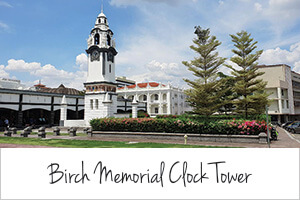
Perak Darul Ridzuan
Perak has been around since prehistoric times, says the official portal of the Perak state government. Kota Tampan in Lenggong is evidence of its existence since the Palaeolithic Age in Tanah Melayu.
Perak became better known following the discovery of tin in Larut by Cik Long Jaafar in 1848 and the state developed rapidly as more mines opened.
According to Rehda Perak, state capital Ipoh was originally a village. It grew quickly in the 1880s as huge deposits of tin were discovered within its vicinity. By 1895, Ipoh was the second largest town in the Federated Malay States — comprising the four protected states of Selangor,
Perak, Negeri Sembilan and Pahang in the Malay peninsula — which were established by the British government in 1895 and which lasted until 1946.
Ipoh fell into decline and neglect from the 1970s due to the depletion of tin deposits in the state and the collapse of tin prices. It gained in popularity again — as a tourist destination — thanks to the state’s efforts to conserve its colonial-era architecture as well as its cuisine and natural attractions such as its limestone hills and caves. Ipoh, which was declared a city in 1988, also managed to maintain its reputation as one of the cleanest cities in Malaysia.
Its Old Town is a testimony to its glory during the colonial and tin-mining days. Many of the buildings and landmarks erected at the time are still standing and remain well preserved. With 70% of Ipoh’s population being of Chinese descent, the rows of old shophouses in Old Town were inspired by the Chinese architecture of the time.
Even though they are not in the best condition, these buildings bear testimony to Ipoh’s heady tin-mining days. The Chinese shophouses in New Town are generally in better shape.
Old Town also neighbours the old central business district, where one can find the unique buildings of Hong Kong Bank, OCBC, Perak Chinese Chamber of Commerce and Industry and Standard Chartered Bank as well as the Ipoh High Court, Birch Memorial Clock Tower, Ipoh Town Hall, KTM Station Ipoh, Royal Ipoh Club and Ipoh Padang.
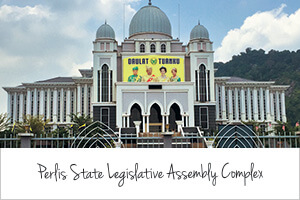
Perlis Indera Kayangan
This northernmost state of Peninsular Malaysia is also its smallest. The state’s capital, the 2,619.4ha Kangar, shares a border with Padang Besar — the gateway to Thailand — and Alor Setar in Kedah.
Rehda Perlis notes that Kangar was established in 1653 as the administrative centre of the 14th sultan of Kedah, Sultan Muhyiddin Mansur Shah. The state and federal governments recently initiated three projects that have significantly advanced the development of the town. The projects involve the construction of electric train service (ETS) stations in Arau and Padang Besar and Universiti Malaysia Perlis (UniMAP), and the cultivation of Harum Manis mangoes.
The town boasts a roundabout that is called Jubli Emas and bears a sign that says “Welcome to Kangar”. It is located close to various government agencies, Balai Polis Kangar, the Kangar Hospital and the Perlis Youth and Sports Complex.
With the ETS stations, the travel time between Kuala Lumpur and Padang Besar is 4½ hours and it is four hours between Kuala Lumpur and Arau. This will allow tourists to alight at the Padang Besar station before entering Thailand and at the Arau station to visit Kangar.
Originally known as Kolej Universiti Kejuruteraan Utara Malaysia or Northern Malaysia University College of Engineering, UniMAP was approved by the Cabinet on May 2001 and renamed in 2007.
Currently, UniMAP has roughly 13,488 students and a workforce of more than 2,193 academic and non-academic staff members. With most of the students staying in Kangar and the surrounding areas, the university brings in a substantial amount of money with accommodation, food and daily necessities.
An icon of Perlis, Harum Manis is a type of mango that grows only in the state due its soil content and weather condition. Most of the farms are in the Bukit Bintang, Batu Pahat and Chuping areas while Kangar is the centre for the retail and wholesale of the fruit.
Perlis produces almost 750 tonnes of Harum Manis a year. The mango, which can only be harvested between April and June, remains green even when it is ripe and is the most expensive local mango, fetching up to RM40 per kg.
The state’s legislative assembly complex is located at Persiaran Wawasan in a 4-storey building that houses the offices of the state administration, the menteri besar and the state secretary. It is also known as Mini Putrajaya.
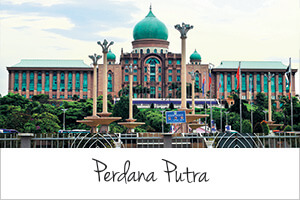
Putrajaya
Putrajaya became the country’s federal and administrative centre — taking over from Kuala Lumpur — in 1999. It was made the third Federal Territory in 2001, after Kuala Lumpur and Labuan.
According to the official portal of Perbadanan Putrajaya — an agency under the Ministry of Federal Territories — the city was named in honour of the country’s first prime minister, Tunku Abdul Rahman Putra Al-Haj, for his contributions to the nation.
Putrajaya has an area of 4,931ha and is about 25km south of Kuala Lumpur and 20km north of Kuala Lumpur International Airport. It boasts the biggest botanical garden in the country — the 92ha Putrajaya Botanical Gardens.
It was planned to be an intelligent city with Multimedia Super Corridor status.
As the federal and administrative centre, many federal buildings can be found there, including Perdana Putra, the Palace of Justice and Wisma Putra.
It also has residential developments, shopping malls and a convention centre.
The city is famed for its signature bridges, including Putra Bridge, Seri Wawasan Bridge, Seri Saujana Bridge and Seri Gembilang Bridge, which have become favourite spots for photography enthusiasts.
The Putrajaya Landmark or Mercu Tanda Putrajaya was built to commemorate the groundbreaking ceremony of the city in 1995. Symbolising the beginnings of the city with a time capsule structure, the design is a combination of a high-technology theme and the use of contemporary and traditional motifs. The structure is located at one of its highest points in Putra Perdana Park, from where visitors can enjoy a panoramic view of the city.
Another landmark is the 68m Millennium Monument in Dataran Warisan. Designed as a timeline, with etchings on the transparent panels along the walkway denoting important periods and milestones in the nation’s history, it looks like a hibiscus when viewed from above while the structure itself is shaped like a rocket poised for launch.

Sarawak
Kuching, The City of Unity, or better known as Cat City, is the capital of Sarawak. According to Sheda, a census by the Department of Statistic in 2010 showed that Sarawak had a population of 2.47 million while that of Kuching was 617,887. Malays, Chinese, Bidayuhs and Ibans form the major ethnic groups in the city, and reflect the cultural diversity across the state.
The city centre has well-preserved old buildings and the history of Kuching can be seen in their design and architecture.
They include the Kuching Post Office, Old Court House, Floating Mosque, Square Tower, Fort Margherita and The Astana. Newer landmarks include the New Sarawak State Legislative Assembly Building and the upcoming new Sarawak Museum.
Located on the north bank of the Sarawak River, the New Sarawak State Legislative Assembly Building was officially opened on July 27, 2009, by Sultan of Terengganu Sultan Mizan Zainal Abidin, who was then the Yang di-Pertuan Agong.
Set to be opened by the end of next year, the new Sarawak Museum will be the second biggest museum in the region after the 10,000 sq m National Gallery of Singapore.
Kuching is also famous for its national park and other green attractions. Much of the state’s flora and fauna are protected under various laws such as the Forest Ordinance 1954, Natural Resources and Environmental Ordinance 1994 and Wildlife Protection Ordinance 1998. Explore places like Bako National Park, Gunung Gading, Semenggoh Matang wildlife centre, Annah Rais and Panchor Hot Spring.
The Kuching Festival and Borneo Rainforest Music Festival are yearly events that attract massive crowds of locals and foreigners.
Pay a visit to the Sarawak Cultural Village to find out more about the indigenous tribes, and the Iban and Bidayuh longhouses for a taste of their cuisine, especially the jungle fern (midin), deer meat and tuak (local rice wine).

Sabah
Mention Sabah and most people think of the 4,095m-high Mount Kinabalu in Kinabalu Park, a world heritage site that boasts many varieties of flora and fauna. The mountain’s name comes from the Kadazan word “Aki Nabalu”, which means the revered place of the dead.
According to the official portal of the Sabah state government, the state’s population is made up of 33 indigenous groups who communicate in 50 languages and 80 ethnic dialects.
The Kadazan-Dusun is the largest ethnic group in Sabah, accounting for almost 30% of the population, while the Chinese make up the largest non-indigenous group.
Shareda notes that capital city Kota Kinabalu (KK) has the most active property market in the state with the total value of property launches last year amounting to RM3.4 billion. KK dominated 83% or RM2.85 billion of the west coast market.
Rich in nature with islands, mountains, rainforests and wildlife, the state is fast becoming a popular tourist destination. It was reported that the state’s tourism industry saw record-high tourist arrivals of 3.87 million last year.
Shareda adds that the increase in tourist arrivals has changed the property landscape with the home-sharing concept dominating the pattern of project launches, such as Bay Suites in Likas and The Crown Service Suites in KK. To date, 3,000 Airbnb units and 2,000 hotel rooms are in the pipeline or under construction to tap the tourism market for the next three years.
Some landmarks in KK include the Kota Kinabalu City Mosque and Jesselton Point Waterfront.
The Kota Kinabalu City Mosque occupies 2.47 acres in Likas bay and is exemplary of contemporary Islamic architecture. The floating white mosque boasts similar features to the Nabawi Mosque in Medina.
Formerly known as the Kota Kinabalu Ferry Terminal, Jesselton Point Waterfront is the main public ferry terminal to Labuan. It features snapshots of KK in the olden days as well as vintage red English phone booths.

Selangor Darul Ehsan
The royal town of Klang has been a site of human settlement since prehistoric times. The 19th century saw the rapid expansion of tin mining to cater for increased demand from the West.
According to Rehda Selangor, the Mahkota Puri Palace was built in 1889 in Klang to replace Istana Alauddin (Bandar Palace) in Jugra as the royal administrative centre. It served as the residence of Sultan Alauddin Sulaiman Shah. After he passed away in 1938, Tengku Alam Shah was enthroned as the new Sultan. The Mahkota Puri Palace was demolished to pave the way for the construction of Istana Alam Shah in 1950.
Istana Alam Shah is the Sultan of Selangor’s official palace. Although he has two other official residences in Shah Alam and Putrajaya, most royal ceremonies are held in Istana Alam Shah.
The palace, built of wood and marble, has 15 rooms. In early 2000, extensive renovations were carried out by Sultan Salahuddin Abdul Aziz Shah.
Shah Alam was declared the state capital on Feb 14, 1974. It lies mostly within the Petaling district, with a small portion in neighbouring Klang district. Once known as Sungai Renggam, it was known for its rubber and oil palm estates. Its current name was given by Sultan Salahuddin Abdul Aziz Shah, after his father Sultan Hisamuddin Alam Shah.
It was Sultan Salahuddin Abdul Aziz Shah who commissioned Masjid Sultan Salahuddin Abdul Aziz Shah in 1982. Known as the Blue Mosque and completed in 1988, it is the first structure many visitors notice upon entering the city. The mosque can accommodate 24,000 worshippers and features a combination of traditional Islamic, West Asian and Malay design elements.
It is the largest mosque in the country and the second largest in Southeast Asia. It also boasts the world’s biggest religious dome, which measures 167ft in diameter and is elevated 350ft above ground. The four minarets are 460ft tall and are the second tallest individual minarets and the tallest group of minarets in the world.
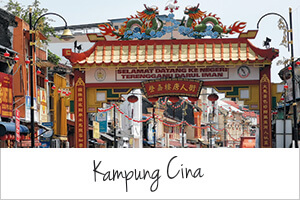
Terengganu Darul Iman
Some of us would remember that Terengganu was previously spelt as Trengganu or Tringganu. The state, which faces the South China Sea, is best known for its Batu Bersurat, kites, leatherback sea turtles and outlying islands such as Redang, Tenggol, Kapas, Perhentian and Lang Tengah.
State capital Kuala Terengganu (KT) was granted city status in 2008. It is the only royal capital among the country’s nine royal states that bears its state’s name.
Rehda Terengganu notes that the iconic historical landmarks of the state include Kampung Cina and the Batu Bersurat roundabout. Literally meaning Chinese village in English, Kampung Cina is also called Teng Lang Po or KT Chinatown by the local people. As this was one of the earliest settlements of the Chinese community, the shophouses built along Terengganu River mirror the designs of their hometowns in China.
The Chinatown culture reflects a mixture of Malay and Chinese traditions and lifestyles as the majority of people here can converse fluently in the local Bahasa dialect.
Next to Kampung Cina is Pulau Warisan, which is a land reclamation project to turn part of Terengganu River into a riverside development with various tourism activities, such as river cruises and night markets. The integration of Pulau Warisan into Kampung Cina has created a vibrant city full of cultural values and racial unity.
The Batu Bersurat roundabout in Kampung Ladang, Kuala Terengganu, features a giant replica of the artefact at its centre. Found in Tersat River in Kuala Berang, Hulu Terengganu, in 1887, the original stone is one of the oldest testimonies to the advent of Islam as a state religion in the region. It is now kept in the National Museum of Malaysia in Kuala Lumpur.
Today, a more modern iconic landmark in Kuala Terengganu would be the Kuala Terengganu City Centre Drawbridge, which connects Kuala Terengganu to Kuala Nerus. Work on the construction of the bridge, the first of its kind in Southeast Asia, started in August 2014. It was opened for public use on Aug 1 this year.
The 638m bridge, which has not been given an official name, is part of the Kuala Terengganu City Centre project undertaken by the East Coast Region Corridor Development Council at a cost of RM248 million.
The articles originated from Racheal Lee/The Edge Malaysia/ This article first appeared in City & Country, The Edge Malaysia Weekly, on September 16, 2019 – September 22, 2019.
